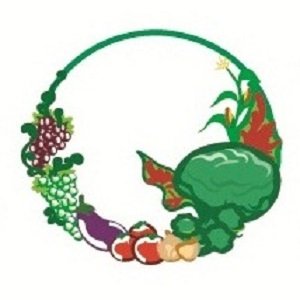
How Does Featherstone
Price Its Crops?
CSA Q & A
Understanding How Featherstone Prices Crops
If you’ve read our CSA Success Series articles, you know that the Featherstone Farm Community Supported Agriculture (CSA) program aims to offer significant value for your investment by bringing you super-fresh, nutrient-dense vegetables, fruits, herbs, and greens. We also aim to bring you extra value through your relationship with the farm, which encompasses everything from our newsletters to on-farm events.
As part of this direct producer-consumer relationship, we strive to be as transparent as possible about how your food gets from our soil in southeastern Minnesota’s bluff country to your plate. And that transparency includes how we price each item in your box.
In a typical CSA, you pay a flat fee and get a “share” of the harvest that might be larger or significantly smaller from year to year, depending on the overall success of the season.
But the Featherstone Farm CSA has always attached a price to the items that go into your box. Even though you’ve already paid for the items through your membership, this practice enables us to ensure that members are really getting a good value.
How We Set Individual Crop Prices
You can find the individual crop prices on the See what’s in my box page in CSAware, the third-party software we use to manage your account.
Currently, these prices are set to be comparable to what you might pay at a food co-op or Whole Foods Market.
When a crop is priced higher than you might expect to pay at a co-op, you’ll find a brief note explaining why. For example, organic green beans are seldom available in stores, period. When they do show up, they are most often machine-picked and bagged at a processing plant (read: cheap!). At Featherstone Farm, we pick all beans by hand, and bag them up just before packing in your box. Fresher green beans means better taste and nutrition…but there is no way to do this at the same price point as California green beans. Therefore, they will be more expensive, and we’ll explain why.
Sometimes, you’ll find that we have discounted a crop below what you might expect to pay at the store. This almost always happens at the peak of the item’s season, when we have an abundant harvest. For example, when red bell peppers peak in early September, we may discount them by 10-30%, depending on the crop size. We’ll notify you of these discounted items in your box customization email.
Our long-term goal is to make all our vegetable prices reflect the actual costs of production at Featherstone Farm, rather than market prices at high-end retailers. We’re a four-season farm located in the “wet” Midwest; the costs of producing organic vegetables locally aren’t the same as industrial-scale horticultural operations located in the desert southwest.
As we discussed earlier in our CSA Success Series, even though you may pay more for local crops than for crops shipped in from California, you’re still getting a good value when you consider the improved taste, freshness, nutrition, and environmental impact of locally grown foods.
Featherstone green and purple beans are picked by hand at their peak.
Why Your Box Value Changes Over the Season
One of the cool things about getting your food from a local CSA is that you’re more plugged into the rhythms of the growing season. That rhythm is reflected in the value of your farm box, too.
In previous years, CSAware valued each CSA box equally. So, for example, each of the 18 boxes in the Sustainer Share would be priced the same (e.g., the price of the membership, $799, would be divided by 18 for a per-box value of $44.38).
However, local agriculture produces more variety and volume in August and September than in June or October. That’s why in 2024 we began pricing boxes to reflect the “real world” bell curve of seasonal production. For example, the first Sustainer box in June is now valued at $30, while several peak-season boxes in late August through mid-September are valued at $58.
Why does this matter? Allowing the value of the box to fluctuate means less food waste for members over the course of the season. Rather than trying to boost the value of a June box by allocating multiple heads of Romaine, for example, CSAware allocates a little less produce to each box early and late in the season, when there is less variety and quantity, but more produce at the peak of the season when members can best take advantage of high crop volume and variety.
But Wait…There’s More!
Now, if you add up the value of all the items in your box over the course of the season, you might notice that you actually get a little bit more than what you pay for at the start of the season—about 4% more for the Sustainer Share, and 2% for the Solo Share.
In addition, your membership also includes two annual on-farm events (the Strawberry Social and the Fall Harvest Party) as well as newsletters, recipes, educational videos, and other “behind the scenes” communications. Jack likes to say that Featherstone is like a great local restaurant that leaves the kitchen door open so you can see how your food is being prepared.
We hope that you find our pricing transparency enhances your Featherstone Farm experience! If you have questions about a particular item or just want to know more, reach out at csa@featherstonefarm.com.




